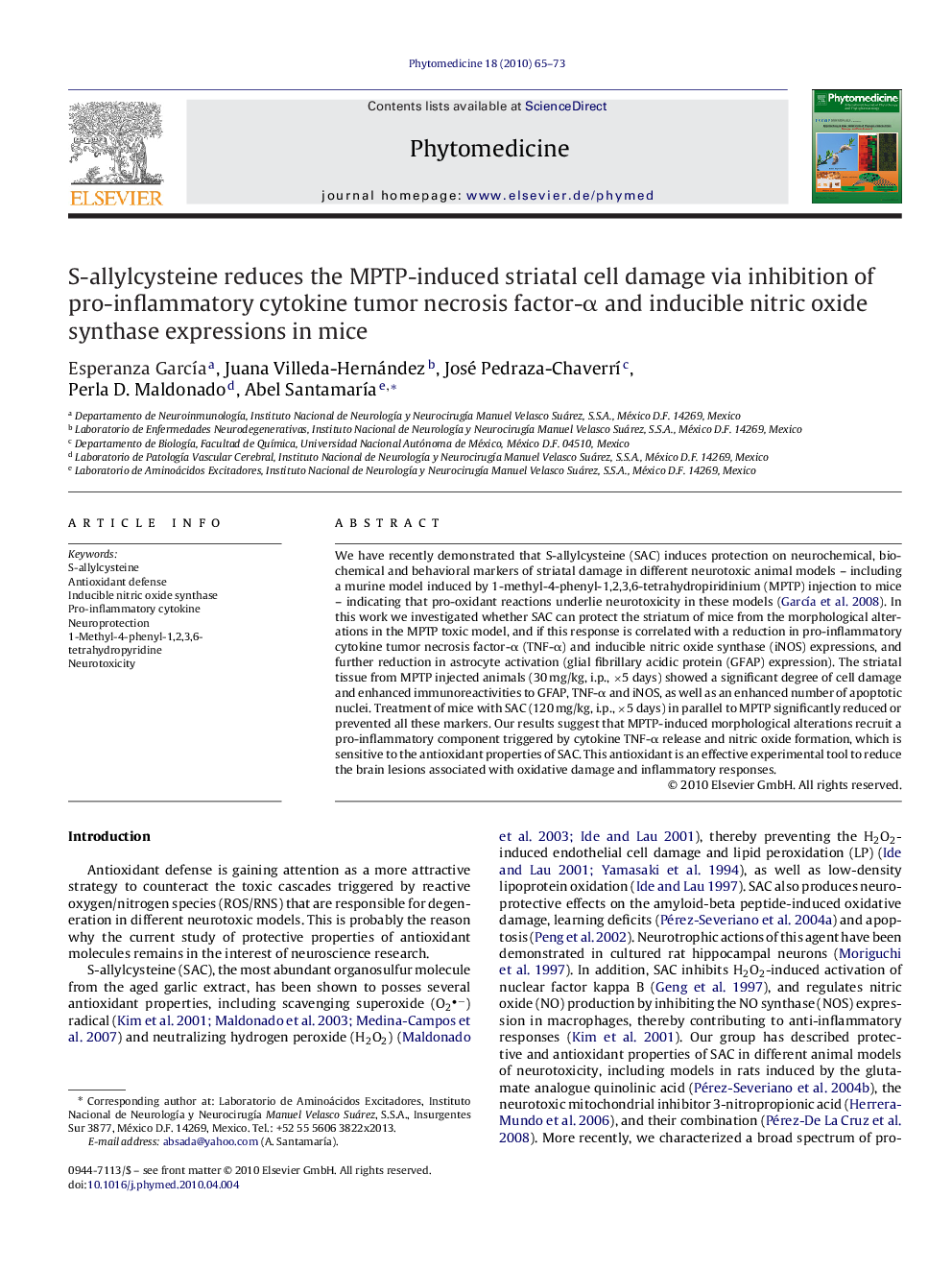| Article ID | Journal | Published Year | Pages | File Type |
|---|---|---|---|---|
| 2497360 | Phytomedicine | 2010 | 9 Pages |
We have recently demonstrated that S-allylcysteine (SAC) induces protection on neurochemical, biochemical and behavioral markers of striatal damage in different neurotoxic animal models – including a murine model induced by 1-methyl-4-phenyl-1,2,3,6-tetrahydropiridinium (MPTP) injection to mice – indicating that pro-oxidant reactions underlie neurotoxicity in these models (García et al. 2008). In this work we investigated whether SAC can protect the striatum of mice from the morphological alterations in the MPTP toxic model, and if this response is correlated with a reduction in pro-inflammatory cytokine tumor necrosis factor-α (TNF-α) and inducible nitric oxide synthase (iNOS) expressions, and further reduction in astrocyte activation (glial fibrillary acidic protein (GFAP) expression). The striatal tissue from MPTP injected animals (30 mg/kg, i.p., ×5 days) showed a significant degree of cell damage and enhanced immunoreactivities to GFAP, TNF-α and iNOS, as well as an enhanced number of apoptotic nuclei. Treatment of mice with SAC (120 mg/kg, i.p., ×5 days) in parallel to MPTP significantly reduced or prevented all these markers. Our results suggest that MPTP-induced morphological alterations recruit a pro-inflammatory component triggered by cytokine TNF-α release and nitric oxide formation, which is sensitive to the antioxidant properties of SAC. This antioxidant is an effective experimental tool to reduce the brain lesions associated with oxidative damage and inflammatory responses.
